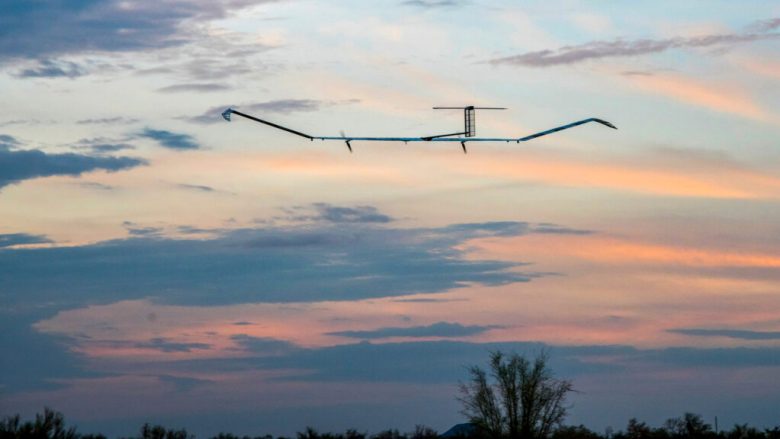TAMPA, Fla. — Aalto has raised $100 million from a group of Japanese companies to help develop stratospheric pseudo satellites in its first investment since being spun out of Airbus last year.
The investment was led by mobile operator NTT Docomo, which is looking to use Aalto’s fixed-winged Zephr drone to keep subscribers connected in areas without terrestrial connectivity that are traditionally served from space.
The investment group also comprises government-owned lender Development Bank of Japan, financial services firm Mizuho Bank and Space Compass, a joint venture between NTT Docomo’s parent company and the country’s flagship satellite operator Sky Perfect JSAT.
Announcing the investment June 3, Aalto said it marks the start of a strategic alliance to commercialize non-terrestrial connectivity and Earth observation services across Asia using payloads attached to HAPS, or high-altitude platform stations.
Samer Halawi, who became Aalto’s CEO in 2022 following executive roles at satellite operators OneWeb, Intelsat and Thuraya, said the funding supports the development needed to start offering global commercial services from 2026.
“This includes launching several customer missions over the coming year, establishing launch and landing sites for Zephyr, and advancing our certification process,” Halawi said without elaborating.
U.K.-based Aalto has been chiefly conducting Zephr test flights from the United States but plans to fly experimental missions from its first permanent base in Kenya this summer.
The company has previously highlighted early demand from governments in particular. Airbus US Space and Defense, based in Arlington, Virginia, is a partner and works directly with the Department of Defense and other U.S. government customers to address connectivity and remote sensing needs.
“Zephyr plays a key role in the space and defence ecosystem,” Airbus Defence and Space head of air power Jean-Brice Dumont said in a statement, “addressing commercial and government sectors from the stratosphere.”

Halawi says solar power battery improvements next year should enable Zephyr to stay in the air for up to 200 days before needing to be replaced by another.
The current record for the 25-meter-wide drone is 64 days in the stratosphere, according to Aalto, much longer than what has been publicly disclosed by heavier-than-air HAPS in the works by companies such as Japan’s Softbank and BAE Systems of the United Kingdom.
HAPS promise significantly lower latency than satellites in orbit because they would operate much closer to Earth.
However, alongside technical challenges, HAPS ventures must navigate multiple regulatory obstacles in the way of the permission they need to provide commercial services in currently unregulated airspace.
Aalto’s investment, which is also subject to regulatory approvals, follows a Memorandum of Understanding signed between Aalto, NTT Docomo and Space Compass in 2022.
Airbus has spent over two decades developing Zephyr’s core technology and said it would remain Aalto’s largest shareholder following the deal.
- SEO Powered Content & PR Distribution. Get Amplified Today.
- PlatoData.Network Vertical Generative Ai. Empower Yourself. Access Here.
- PlatoAiStream. Web3 Intelligence. Knowledge Amplified. Access Here.
- PlatoESG. Carbon, CleanTech, Energy, Environment, Solar, Waste Management. Access Here.
- PlatoHealth. Biotech and Clinical Trials Intelligence. Access Here.
- Source: https://spacenews.com/aalto-gets-100-million-for-high-altitude-pseudo-satellites/



